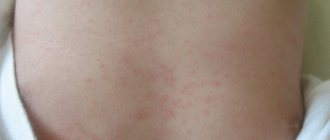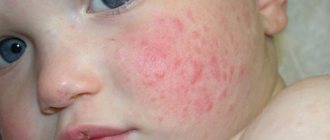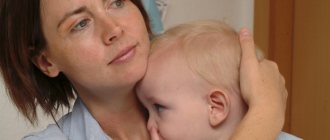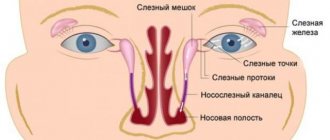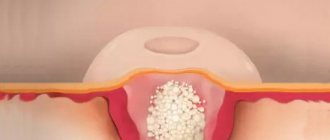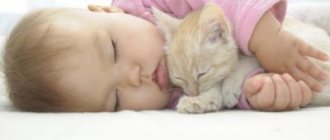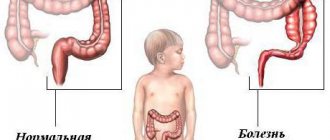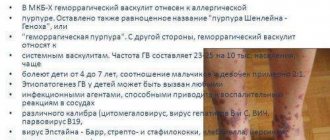Clubfoot is a disease that has three degrees of severity. They are determined depending on how deformed the foot is and how mobile the ankle joint is:
- Mild clubfoot. The ankle joint remains mobile, the foot is not severely deformed.
- Medium - the mobility of the ankle joint is limited, the curvature of the feet is noticeably more pronounced.
- Severe clubfoot. The ankle joint is immobile, the foot is severely deformed.
To choose an effective treatment method, it is important to correctly determine at what stage the disease is. This can only be done by a qualified orthopedic surgeon.
Treatment of mild and moderate forms of clubfoot
Mild to moderate foot deformities are treated using the following methods:
- Massage. It is carried out in order to relieve overstrain and strengthen certain muscle groups of the lower leg. The upper and back ones need to be relaxed, so they are stroked, shaken and stretched with vibrating movements. The anterior and external ones are strengthened using techniques such as rubbing, kneading and finger tapping. To completely get rid of the disease, the orthopedic doctor prescribes several courses of such procedures.
- Kinesitherapy, or “movement therapy”. Health-improving exercises aimed at increasing activity or relaxing certain muscle groups. The choice of exercises depends on what goal you need to achieve.
- Soft bandages. Used together with gymnastics to treat mild foot deformities. The best known is the Fink-Ettingen method, when complex bandages are applied to the foot in a certain position and order. Treatment is carried out in several stages.
- Orthotics. The method consists of using removable devices that fix the legs in the desired state and limit incorrect movements.
The following types of orthoses are used for immobilization:
- Orthopedic device – an orthosis with hinges in the area of the ankle and/or knee joints.
- A splint is an orthosis without moving elements. The modification of the splint is chosen based on what strength is required in a particular case. For walking, a load splint is used when the feet are at rest - non-load (night).
- A brace is a complex orthosis that has different degrees of rigidity and fixation. Made from non-woven soft and rigid materials.
- Orthopedic insole. They relieve the foot from overload, bring the inner part of the foot turned upward into the desired position, and also correctly position its rear part.
- Orthopedic shoes. Brings the feet to a natural state and also increases the area of support. This shoe differs from the usual one in the structure of the last (it corrects the forefoot), as well as in the presence of rigid elements that bring the foot into the correct position in relation to the shin.
Diagnosis of the disease
How clubfoot in a child can be cured and how quickly is determined by timely diagnosis. Congenital pathology is detected:
- in the womb by ultrasound examination of the fetus;
- at the first medical examinations of the baby;
- when the baby is not yet walking, attentive parents themselves notice the abnormal development of the legs, turn to the doctor with the question of whether clubfoot can be corrected for a child under 2 months old;
- Acquired pathology in children over 1 year of age is diagnosed by observing the position of the legs when walking.
An effective method for diagnosing abnormalities in the development of the legs is palpation during an in-person medical examination. If a specialist has questions about the deformation of children’s feet, a referral for an x-ray is issued to confirm the diagnosis. It is important to immediately decide how to treat clubfoot in a child without triggering the course of the disease.
An effective method for diagnosing clubfoot in children occurs during an in-person examination during palpation. If a specialist has questions about foot deformities in a child and to confirm the diagnosis, the doctor will order an X-ray of the feet.
You can make an appointment with a specialist by phone: 8 (800) 555-84-21 on weekdays from 9.00 to 19.00 Moscow time Or through the form on the website Sign up for a free consultation
Treatment of severe clubfoot
Conservative
This includes a non-surgical method such as plaster casting.
The feet are cast almost immediately after the baby is born (on the third or seventh day). This is due to the fact that it is during this period that the feet are very flexible and easier to correct. The legs are cast in stages, gradually bringing them into the correct position, and fixed with a plaster cast. They change it on average once a week.
The efficiency of traditional plaster is not very high, it is approximately 58%. Today, the most effective and safe way to treat severe clubfoot is plaster casting using the Ponseti method, followed by wearing special braces.
Its effectiveness is 98%. This technique differs from the classical one in the features of the manipulations performed by the doctor, the structure of the applied plaster, and the time the child spends in it. The Ponseti method involves three steps:
- Plastering.
- Closed achillotomy.
- Wearing braces.
The start time of treatment is 3-7 days from the moment the baby is born. After successfully completing all stages of casting, the child undergoes a closed Achilles tendon - a safe and low-traumatic operation to lengthen the Achilles tendon. To exclude relapses of the disease, the child is put on braces, in which he remains for a certain number of hours, according to the wearing protocol. It is very important to strictly comply with its terms and not reduce the time you wear the braces without consulting your doctor.
Causes of clubfoot
The following factors can be identified that predispose to the occurrence of pathology:
- Genetic. Mutations at the chromosome level that cause diseases of the musculoskeletal system (Edwards syndrome).
- Heredity. A family history of this anomaly in relatives.
- Mechanical. Features of the course of pregnancy, in which the feet take a cramped position, are compressed, as a result of which their shape changes (oligohydramnios, improper positioning of the fetus).
- Avitaminosis. Previous illnesses in the first trimester of pregnancy.
- Small number of nerve fibers.
Surgical treatment of clubfoot
Traditionally, this disease in children was treated by casting, and if it was ineffective, surgery was prescribed. It is also indicated if the anatomy of the foot is disturbed and muscle function is reduced. Intervention is indicated when the child reaches one to two years of age. For correction, releases according to Sturm, Zatsepin, etc. are used, as well as plastic surgery of the ligamentous apparatus, tendons and aponeurosis of the feet. Tendons can lengthen and stitch together, and foot ligaments can cross. In some cases, it is also necessary to correct the bone structures. The operation may involve fixation of the foot using wires or an Ilizarov apparatus. However, most often during the rehabilitation period for up to six months, wearing a plaster cast is indicated.
The surgical technique is characterized by a high percentage of relapses - according to world statistics, the figure reaches 64%.
Exercises to correct club feet
It's good if you have the opportunity to work out at the gym, but this is not a requirement. You can practice on the street, in the forest, in the country and, of course, at home. You must develop exercises, systematize them and gradually increase the load. You can talk to the physical education teacher at school and he will suggest some exercises for your child.
When you understand what needs to be done and explained it to your child, start doing the exercises with him. For the second lesson, take a video camera and film your child’s awkward movements.
After 5-7 lessons you will get the first results. Show your child a video of the activity. Children usually like their successes, they are proud of themselves and strive forward with great zeal. But make no mistake, you are just at the beginning of the journey. Don't forget to praise and stimulate your child.
So, you started studying. It is advisable for the child to be as focused as possible on what he is doing. First, let's run a few laps, this will warm up the muscles, and most importantly, it will help you see the problem again, especially on turns. From this day on, your child will no longer run as he pleases. Now he will learn to run and walk in a new way.
When running, you don't need speed, the main thing is to place your feet correctly. In the next lesson, you introduce a system of “additional exercises” for inattention and incorrect leg positioning (remember those same claps and push-ups). For the first few weeks, you will have to carefully observe what the child is doing, rubbing his palms together in anticipation of clapping them.
When you notice that there are fewer mistakes, offer your child the following exercise: raise your arms to your chest, clench your fists and twirl your fists in front of you while running. To begin with, you can twist your fists only in one direction, for example, towards yourself, and after several lessons the exercises become more complicated and alternate - 10 times in one direction, 10 times in the other. At the same time, you will see that all previous successes achieved in the fight against clubfoot have sunk into oblivion. It doesn’t matter, a few lessons - and your child will cope with the task assigned to him - he is reluctant to do push-ups.
You dilute running and walking around the hall with jumping on your toes. The positioning of the legs should be in the style of Chaplin. In this position, the legs should come off the floor and land in the same position. It’s good to climb stairs with this gait, preferably higher and regularly. Add to the exercises goose-stepping, jumping from a squatting position, and the like. Or ask your child to imagine that he is carrying a large, heavy watermelon. The watermelon is so heavy and big that the child is forced to walk, as they say, “half-bent,” and he needs to carry the watermelon to the end of the hall as quickly as possible, but not run.
Include exercises to externally rotate the foot in any variation. An excellent corrective pose is “sitting between the heels.” The child is on his knees, feet spread apart with toes apart. You need to slowly lower yourself and sit between your heels.
It is necessary to include stretching exercises, as well as static exercises, for example, such as the “rider's stance”: the legs are placed slightly more than shoulder-width apart, and with a flat, straight back, the child lowers himself into a semi-sitting position, the arms can be extended forward, and the feet should be parallel to each other. Duration of the exercise: 15 seconds - freeze in the rider's position, 5 seconds - rest. We repeat five times. Anyone you know who has done karate or other martial arts will show you this exercise and stretching exercises.
It wouldn’t hurt to include exercises to stretch the spine, thereby relieving the back. Stand with your heels together, toes apart, back straight. Place your hands down, cross your fingers and turn your hands over so that your palms are facing down. Without unclenching your fingers, raise your arms up. Now imagine that you are a plant that strives for the sun, and, swaying slightly, without lifting your heels, begin to reach up. Stretch as far as possible. Then slowly begin to lift your heels off the floor and stretch further. Having reached the limit, lower your heels one by one, while your arms continue to reach up. We do all this leisurely, slowly. Try it yourself and include this exercise in your activities with your child.
I'll tell you my proprietary secret. Tie a plastic bottle to the frame of your child's bicycle so that it is at knee level. Then, when pedaling, the bottle will prevent him from bringing his legs together. Simple and effective.
Pay attention to the shoes the child wears; often these are the ones that cause them to place their feet incorrectly.
If you have the opportunity, get your child interested in skateboarding or snowboarding. These sports will not give you a chance of clubfoot.
So you've made progress. Now take your child to a sports section or dance club. Any result needs to be consolidated.
The importance of treatment, negative consequences of advanced disease
Timely treatment of clubfoot in children will correct the situation. Knowing how to effectively treat clubfoot in children, experienced orthopedists will return the child to a full life. You will have to walk around for a short time in orthopedic shoes - braces, gradually reducing the duration of wearing. After the main part of the treatment, from the first months from birth to the age of two, the baby is put on them only at night. The Ponseti method almost does not cause relapses, the muscles retain flexibility and strength, and the operation is low-traumatic. The wound from it heals quickly without scars, skin tightening, or discomfort when wearing shoes, which cannot be said about surgical treatment of advanced pathology.
It is advisable to correct congenital clubfoot in infants in the first months after birth, while the tendons and muscles are most extensible. When the child begins to walk, the pathology becomes more complicated, the standard regulations of the Ponseti method may not be enough, and additional surgical intervention for clubfoot with tendon transplantation will be required. An advanced disease threatens:
- muscle atrophy;
- dysfunction of the joints;
- subluxation of bones;
- scoliosis;
- loss of the ability to walk normally;
- disability.
Project “Towards Life” for children's health
Having discovered abnormal development of the baby’s feet, parents are wondering how to treat clubfoot in a growing child to quickly correct the defect without recurrence of the disease. The answer is provided by the unique project “Towards Life”, specially created to help children in need. The qualifications, experience of the doctors involved, and treatment with progressive methods guarantee the success of the therapy. The children we helped grow up healthy, not inferior in development to their peers.
Treatment for clubfoot in all children within the project is free. Thanks to the financial support of the Rusfond charitable foundation, children receive highly qualified medical care without paying the cost of plastering, surgery, or materials. Nonresident patients arriving in Yaroslavl for long-term treatment are provided with housing for the period of their stay. You can find out how to cure clubfoot in a child for free under the Towards Life project by email or phone. Calls from Russia are free.
For all questions, you can consult by phone: 8 (800) 555-84-21 on weekdays from 9.00 to 19.00 Moscow time
Shoes for club feet. Braces from
Requirements for photographs provided for online consultation on clubfoot
How to effectively treat clubfoot in children?
At an early stage of the disease, doctors answer in the affirmative the question of whether it is possible to permanently correct clubfoot in a 2-month-old child.
Even conservative therapy with fixation of the baby’s feet, massage, and physical therapy, starting from the first week of birth, will help. For a baby under one year old, this option is best suited. For children under 2 years of age, it is also effective when using orthopedic shoes and splints worn at night. The results of clubfoot treatment in older children from the age of 8 will be strengthened by sports activities, swimming and dancing. If conservative methods do not help, surgery is needed. When advising on how to cure clubfoot in a child, eliminating consequences and relapses, most orthopedists recommend the Ponseti method. Consisting of staged plaster casting from the toes to the upper third of the thigh, it helps correct the position of the foot in several planes. 6-7 changes of plaster casts will be required depending on the complexity of the case. To completely correct the defect, children under 1 year of age undergo a minor outpatient operation under local anesthesia. The doctor cuts the Achilles tendon to allow more dorsiflexion and free movement of the foot.
Attention! The “Towards Life” project provides the opportunity for free treatment!
Causes and signs of clubfoot in children
The disease is very common all over the world and doctors detect it in one child out of 1000 children. Orthopedists, unfortunately, do not immediately detect pathology in infancy. Only after 2 years can you accurately make a diagnosis and find out the cause of the disease.
As a rule, this occurs due to external factors:
- If there were cases of fractures, after which the bones did not heal properly.
- Other injuries associated with bruises, burns, rupture of ligaments and muscle tissue.
- Consequences after life-threatening diseases (poliomyelitis, rickets, hip dysplasia, valgus pathology).
- Scoliosis (curvature of the spinal column).
- Increased lower back muscle tone
- A tumor develops in the legs.
- Parents did not choose the right shoes (too narrow).
Congenital pathology occurs due to:
- genetic failure, when close relatives suffer from the same illness;
- violations of the regime during pregnancy (tobacco smoking, taking illegal drugs, alcohol and working in hazardous work);
- multiple pregnancy;
- tightness of the feet of the unborn child by the umbilical cord or the walls of the uterus;
- severe toxicosis, vitamin deficiency, oligohydramnios or uterine hypertonicity;
- incorrect position of the baby before birth.
Signs of congenital and acquired forms of the disease
Making a preliminary diagnosis and starting to correct congenital clubfoot allows the presence of four symptoms that are noticeable during an ultrasound of the expectant mother already at the 16th week of fetal development:
- Dropping of the outer edge of the foot while raising the inner edge.
- The backs of the clubfooted feet “look” at each other.
- Bending the plantar part of the leg with raising the heel.
- Deviation of fingers inward.
A number of additional signs allow you to diagnose the defect after birth and decide how to begin treating clubfoot in a child. This is a smaller size of the foot relative to a healthy leg with unilateral pathology, displacement of the heel along the axis of the leg, limited mobility of the ankle joint. Serious concern about how to cure clubfoot in a two-year-old child or older is necessary if he walks, “raking” his legs like a bear, puts them not completely (on tiptoes), with his toes inward, leaving characteristic marks in the sand.
